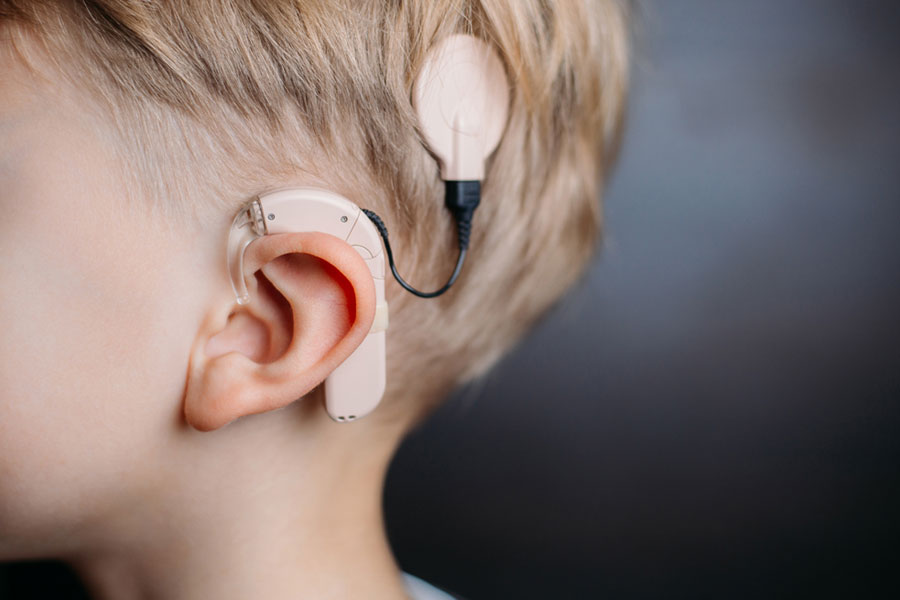- +91 9051161900
- contact@organtransplantindia.com
- Kolkata, India
Cochlear Implant
A cochlear implant is a small electronic device that can help people who are deaf or hard of hearing. It works by bypassing the damaged parts of the inner ear and directly stimulating the auditory nerve. This allows the brain to receive sound signals and interpret them as speech and other sounds.
Cochlear implants are made up of two main parts: an external part that sits behind the ear and an internal part that is surgically implanted under the skin. The external part contains a microphone, a speech processor, and a transmitter. The microphone picks up sound from the environment and sends it to the speech processor. The speech processor converts the sound into electrical signals and sends them to the transmitter. The transmitter sends the electrical signals to the internal part of the cochlear implant.
The internal part of the cochlear implant contains a receiver and a stimulator. The receiver receives the electrical signals from the transmitter and converts them back into sound signals. The stimulator then sends the sound signals to the auditory nerve.

Cochlear implants can help people of all ages, including children. They can be used to treat a variety of types of hearing loss, including:
Sensorineural hearing loss: This is the most common type of hearing loss and it is caused by damage to the inner ear or auditory nerve.
Conductive hearing loss: This type of hearing loss is caused by a problem in the outer or middle ear that prevents sound waves from reaching the inner ear.
Mixed hearing loss: This type of hearing loss is a combination of sensorineural and conductive hearing loss.
Cochlear implants are not a cure for hearing loss, but they can help people to hear better and improve their quality of life.
How cochlear implants work
Cochlear implants work by bypassing the damaged parts of the inner ear and directly stimulating the auditory nerve. This allows the brain to receive sound signals and interpret them as speech and other sounds.
Here is a more detailed explanation of how cochlear implants work:
The microphone picks up sound from the environment.
The speech processor converts the sound into electrical signals.
The transmitter sends the electrical signals to the internal part of the cochlear implant.
The internal part of the cochlear implant converts the electrical signals back into sound signals.
The stimulator sends the sound signals to the auditory nerve.
The auditory nerve sends the sound signals to the brain.
The brain interprets the sound signals as speech and other sounds.
Benefits of cochlear implants
Cochlear implants can have a number of benefits for people with hearing loss, including:
Improved hearing: Cochlear implants can help people to hear better in a variety of situations, including noisy environments.
Improved speech comprehension: Cochlear implants can help people to understand speech better, both in person and over the phone.
Improved quality of life: Cochlear implants can help people to improve their quality of life by allowing them to participate in activities that they were unable to do before, such as having conversations with friends and family, going to the movies, and listening to music.
Risks of cochlear implants
Cochlear implant surgery is a major surgery and there are some risks associated with it, including:
Infection
Bleeding
Blood clots
Nerve damage
Dizziness
Tinnitus (ringing in the ears)
Facial paralysis
The risks of cochlear implant surgery are relatively low and the benefits of cochlear implants often outweigh the risks.
Is a cochlear implant right for you?
If you are considering a cochlear implant, it is important to talk to your doctor about the risks and benefits. Your doctor will assess your hearing loss and determine if you are a good candidate for cochlear implant surgery.
Cochlear implants can be life-changing for people with hearing loss. They can help people to hear better, understand speech better, and improve their quality of life.
